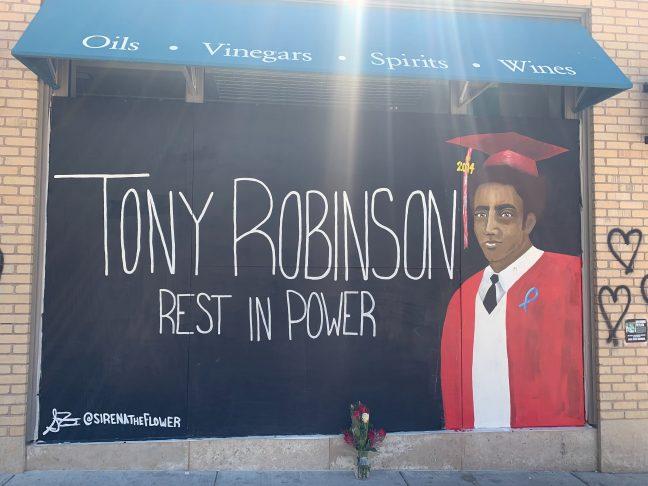Activists took to the streets last Saturday to march in honor of Tony Robinson, who was shot and killed by a Madison Police Department officer March 6, 2015.
Co-founder of the University of Wisconsin BIPOC Coalition Tarah Stangler helped plan the safety for the event. Stangler wanted to help the planners and attendees of the events feel safe and allow them to focus on the event itself.
“There are a lot of things that …. we see wrong with the case that didn’t feel like it was taken into consideration when the case originally went through,” Stangler said.
Robinson, an unarmed biracial 19-year-old, was shot seven times by officer Matt Kenny. There are many disputed facts about the case, and Madison paid a settlement of $3.35 million to Robinson’s family, according to the Isthmus. Kenny was cleared by the Madison Police Department and continues to be employed by them, including teaching mindfulness mediation.
UW student Kylan Bartel, an attendee at the march, thinks it is extremely concerning that Kenny is still employed by MPD. According to CNN, Kenny has two recorded kills — Tony Robinson in 2015 and Ronald Brandon in 2007.
Associated Students of Madison chair Matthew Mitnick also attended the march and said in a statement to The Badger Herald that it is important that justice is served for Robinson.
“The march on Saturday demonstrated that Madison has not forgotten how Matt Kenny abused Tony Robinson’s rights and how MPD has unethically worked the justice system to their advantage,” Mitnick said in the statement. “Seeing so many members of the community come together like they did on Saturday further proves how the fight for change and true justice will continue.”
There is an ongoing petition to reopen the case and fire Matt Kenny, which was started by Robinson’s grandmother. But the statute of limitations to prosecute Kenny ran out on March 7.
Stangler hopes that events like the march will work to draw the students at UW more into the happenings of Madison. Stangler said they view the campus as a bubble that is not often connected to the greater community.
“There’s a lot of people on campus that say they’re for Black Lives Matter, say that they’re for the movement, but this is something that happened so close to home that they could continue to support and draw attention to,” Stangler said.
Stangler is frustrated that Robinson’s case was not able to capture national attention. Stangler said they think it didn’t have the same impact that other instances of police violence have had, and that Robinson unfortunately largely ended up as another statistic.
Stangler also said while there was no police presence at the maskless party on Lake Mendota the same day, the march was closely monitored by police.
Stangler said they believe many of those that attended the party possibly show support for social justice movements on their social media accounts but fail to actually show up to events and work for positive change.
“If you say Black Lives Matter, and you really mean it, then you need to show up when the community needs you,” Stangler said.


